Mandy 2018 action, horrorIn the opening scenes we, the audience, are introduced to a nice, normal couple – Red Miller and Mandy Bloom. The two live happily together in a modest cabin on a forested acreage. It is set in the American northwest – in lumber country. Red is a lumberjack and Mandy is a writer. They both are pretty laid back and calm. It is rare for a horror film to spend about 20 – 30 minutes of its run time that consists of an extended prologue exploring Red and Mandy’s relationship before the latter's death. We know it is a set-up and a journey to hell waits in the wings. The film's score creates a sense of moody foreboding. Throughout the film's first half, the music is mostly relaxing in tone, later a synthesizer line pulses stronger and stronger, spiking and jarring when we are introduced to the presence of evil – an unmarked panel van traveling down a gravel back road. At this point the movie changes gears and the trouble starts. The passengers of the van are the Children of the New Dawn, a band of religious fanatics with a “charismatic” Charles Manson type leader. The cult is also deep into psycho-active drugs of astonishing potency. In a 2018 UK Guardian interview, Nicolas Cage described his performance's inspiration for Red Miller: only just before shooting on the film started, his 14 year marriage to Alice Kim Cage came to 'a sudden end', which was "A shocker for me... I didn't see it coming, and those feelings had to go somewhere, so they went into my performance." So Cage hired a personal “screaming coach” named David Sellers (uncredited) to capture the right vibe. There's a scene in the movie during the violent death of his lover, Mandy Bloom (Andrea Riseborough), at the hands of Children of the New Dawn. Red Miller is bloodied and chained up. Cage has a look on his face of utter amazement and dread and horror as the camera hangs back at first them closes in tighter and tighter as Red begins screaming and screaming; we are witness to a real life, on-screen total catharsis. Of course, the cult leader spares Red, or else there is no movie. Red goes on the warpath and we have a straightforward revenge plot told in a series of roughly connected, often trippy, images or hallucinations. Many of the scenes are washed out with a red tint when they aren't streaked in bright, blinking greens and whites that unfold in a sort of a waking nightmare fashion. The logic (if that’s the correct word) is sketchy, impressionistic and steeped in mysticism that makes trying to "solve" it feel like missing the point. Red’s weapons of choice are a crossbow and a hand-made battle axe that seem to have mystical powers of their own. Throughout the narrative thread of Red’s bloody revenge quest, the director/writer Panos Cosmatos, crafts one after another of his hypnotic scenes that work as pure filmmaking, while tapping an emotional core you feel rather than understand. This movie is not for everyone, but here at House Clark, Mandy is the WTF did I just see movie of 2018, and maybe for the entire 2010 decade.
0 Comments
Kill List 2011 crime, horrorThis is a difficult film to review (without giving too much away). The movie is a mix of crime and horror genres, with a dash of dark, British humor. The two main characters, Jay and Gal, are professional hitmen and some of their conversations are quite funny. Jay’s wife, Shel, pressures Jay to get back to work even though she knows he kills people for Lots of cash. The first act of the film might give you the impression it's a garden variety family melodrama with a troubled, unemployed father. It isn't. The second third of the film might give you the impression that it's your typical hitman-action-crime drama. It isn't. Then comes the final third. None of the incredible third act has been foretold in earlier scenes, and then there's a shocking finale that’s only slightly hinted at (a ten second scene where Fiona goes into Jay and Shel’s bathroom and scratches a strange symbol on the back of the mirror). It will make you question everything you've seen up to that point. It's out there. Waaaay out there. I haven't seen an ending like that before, and it raises moral questions that the audience has to deal with, one way or another. It’s best not to overthink it, and I probably will not watch it again. The film does a terrific job of building a mood and layering suspense aided by an immensely talented cast who are believable and hit the right notes. The violence is intrinsic to the film and to its protagonist, but that doesn't make it any easier to watch. In one scene, Jay beats a man with a hammer like he was a piñata. Not a film for the squeamish. Ben Wheatley (Director) does not turn the camera away from violence. There are a couple of quite graphic scenes that might have you wincing. It is Grim and intense. Before I wrap this up, it should be said that this is an indie British film, and some of the characters have the mumbling, thick lower estuary accent that is difficult, for most Americans, to understand. Take a moment to switch on the subtitles then sit back, relax and let the mayhem begin. Prevenge 2016 dark, comedy, crimeThis revenge flick has an unlikely Avenging Angel; Ruth (Alice Lowe) is a widow and very pregnant, I’m guessing 7 months. She has a bun in the oven and a knife in her hand bag along with a bizarre notebook. And if your name is in her notebook, she will pay you a visit and slay you with her trusty 9 inch kitchen knife. Why? It takes about half of the movie runtime to catch a few hints. [The following is not really a spoiler – it helps the viewer understand the movie]. The names in Ruth’s kill list are the people who Ruth feels were either instrumental or tangential to the death of her husband in a mountain climbing accident. She also carries on a running conversation with her unborn baby. The nature of the mommy- baby discussions is better left unsaid so as not to spoil this fine dark comedy. The homicides are simple but bloody affairs and each has a hilarious set up. In classic British dark comedy fashion, the cops fail miserably and don’t have a clue about identity of the killer. Ruth is an outwardly ordinary woman; the sort people hardly notice which makes her easier to believe. It is important that the film treats Ruth as a sympathetic character. The success of the movie depends on it. Most of her victims are rather obnoxious and odd, and there are scenes where she shows a caring side... most amusingly when she cares for a man's mistreated mother shortly after dispatching him. The making of this low budget, pregnant slasher film is remarkable. Alice Lowe, finding herself pregnant, used her condition to inspire this blackest of black scripts. She then wrote, produced, cast and filmed (in 11 days) the whole affair before her baby arrived. Amazing! Sightseers 2012 comedy-romance, crimeThis film is very much a team effort: the two stars, Alice Lowe (Tina) and Steve Oram (Chris), also co-wrote the script, based on two characters they developed while working in Stand-up comedy clubs. The highlight, and 90% of the film, is when Chris and Tina, his new girlfriend, embark on an extended caravanning (trailer camping per Americans) holiday. The road-trip gives Tina the chance to liberate herself, just like Chris, who dreams of becoming a full-time writer. Chris tells Tina that she is his muse and the trip is intended to spark his creative writing efforts. At first they have a budding, rather awkward and “normal” romance that soon warms up into a honeymoon-type trip. They are shagging like newlyweds before reaching the first campground. So off they go to visit a tram museum, the Keswick pencil factory, historical relics and campgrounds. It is a very British journey. The script is deadpan yet very witty: both Tina and Chris get some funny one-liners. The traveling couple has an unlucky knack for encountering an annoying, rude person almost every place they visit. Who hasn’t met some obnoxious lout on vacation? Sure we’d love to punch him in the nose with brass knuckles, but we don’t. It’s ok to think it, but Chris is not the type to let it go. He gets angry and commits a string of homicides everywhere they go. Is it funny? Yes. Did I laugh? Yes. By the time Tina gets in on the killing, I was roaring. Oh, I almost forgot – the movie has a cute dog along for the trip. So how does the trip end? Sorry mate, No spoilers. Find it and watch it, and remember it’s only a movie; not a lesson in morals. The film is beautifully shot. The Director, Ben Wheatley, takes full advantage of the breathtaking backdrop of the vibrant green, rolling hills of Yorkshire and the Lake District. A weird British film like this one is destined to become a cult classic. Hollywoodland 2006 drama mysteryI am easily drawn to movies that are set in the 1950’s because I remember those early days of my childhood very clearly. Back in the 50’s, Clark Kent was a household name, and everyone knew the Superman intro by heart, “Look up in the sky, it’s a bird, it’s a plane, no, it’s Superman”. I never knew that the original Superman actor, George Reeves, committed suicide (according to official reports by LAPD), until I came across this movie. The protagonist in the movie is a struggling private detective, Louis Simo (Adrien Brody) who investigates the death of Reeves as a “whodunit” at the urging of Reeves’ mother, who rejects suicide as cause of death of her son. Simo is smart enough to know he is soon in way over his head with the investigation. He plugs along trying to build a homicide case. Pros - This is a beautifully produced film with some Oscar worthy performances, particularly from the lead actors; Diane Lane, and Ben Affleck. Affleck's resemblance to Reeves in some scenes is astonishing - particularly as Clark Kent! Affleck even had Reeves' vocal rhythm. Ben certainly does his best dramatic acting since his glory days in 1997, and this performance probably saved him from “winning” Razzie’s worst actor of 2000’s decade (Eddie Murphy “won” with his unbelievable string of turkeys.) As Toni Mannix, Diane Lane is mesmerizing, sexy, strong, and possessive of George, first as a gorgeous vamp and then as the flinty and scorned older woman. Ten years George's senior, Toni understands that she's not getting any younger and quips to George, "I have another seven good years, then my ass drops like a duffel bag." Bob Hoskins is great as the menacing, tough guy Eddie Mannix, an MGM studio executive. Best Eddie scene – the awkward double date with Eddie and his Japanese mail order mistress, and his wife, Toni, on a date with Reeves. They are at a fancy restaurant where Toni pops a request for Eddie to buy a small Hollywood bungalow. Eddie knows that she wants to set up her new Hollywood pretty boy in the new house. Eddie shrugs and says, “Ok, real estate is always a good investment.” When Reeves tries to engage the Japanese girl in conversation, Eddie screams at Reeves, “Don’t talk to her. She doesn’t speak English!” LOL for true love. Like the dinner date scene, the best scenes in the film are told in flashback of George Reeve’s life in Hollywood. The scenes filming "The Adventures of Superman" are fantastic, and I for one wanted to see more. "Hollywoodland" captures the reality of making a television show back then and evokes the atmosphere of Hollywood in the '50s beautifully. Cons - Unfortunately the film is flawed; there was too much diversion into Louis Simo’s personal problems that have little to nothing to do with investigating the George Reeves suicide-or-murder mystery. Simo’s troubles were all very commonplace and boring. Who cares, anyway? I recently rewatched this forgotten movie with my finger poised on the fast-forward button. I skimmed thru scenes with Simo’s ex-wife and kid. I never missed a single item as related to storyline and plot, and made Reeves/Affleck more the center of the story, so I got a better understanding of Reeves’s character and enjoyed my “self-edited” version much better than the original (poorly edited) studio version. Enough Said 2013 romance, comedyJames Gandolfini, in one of his last film roles, co-stars with Julia Louis-Dreyfus in this low budget, indie film written and directed by Nicole Holofcener. This is by far Holofcener’s best work to date. The supporting cast is solid with Catherine Keener (a usual player in Holofcener's movies), Toni Collette and Ben Falcone. I was hooked when I saw the photo on the DVD jacket – Tony Soprano dating goofy Elaine from Seinfeld. I had to give it a try, so I popped the library rental into the player and watched with my wife, who is a big rom-com fan. This is one of Gandolfini's best and most likable movie performances and Louis-Dreyfus has never been better. Julia Louis-Dreyfus plays Eva, a divorced, massage therapist who is not looking forward to her daughter going away to college. Eva meets a lot people in her business and gets invited to a party where she meets Albert (Gandolfini). Albert is a divorced father who is also soon to be an empty nester. Eva and Albert hit it off and begin dating. Later Eva becomes friends with Marianne, who happens to be Albert’s ex-wife. Marianne has no idea that Eva is dating Albert, and she is a motor mouth with plenty of negative stories about Albert. Sometimes it is really a small world, so the second part of the movie is about Eva’s dilemma of keeping her mouth shut and dealing with too much information on Albert. The film is amusing but not in a screwball, or slapstick way. It has a lot to say about second chance relationships, as well as family dynamics. Eva and Albert's characters drive the drama but it's the subtleties of the interactions between the two that makes it tangible & real and makes the whole film work. Albert lacks a polished veneer, but his honesty is refreshing and ultimately Eva sees him as a very caring and charming man. It's Louis-Dreyfus that really surprised me though. On 'Seinfeld' she was cast, like so many of the characters of that show, as a whiny, selfish, neurotic NYC Jew. I liked her better playing a normal, mature adult and considerate mother, and she helped make the movie true to life. Enough said. Horror of Dracula 1958 horror dramaWhen looking for a top-shelf, vintage British horror film, certain elements must be considered. Is it from either Hammer or Amicus Studios? Yes, it’s from the former. Does it star either Peter Cushing or Christopher Lee? In fact, it stars both of those fine actors. Does it feature Michael Gough in a supporting role? It sure does! Was it directed by Terence Fisher or Freddie Francis? Indeed, this is a Terence Fisher classic. At this point, the film’s plot, which revolves around vampire hunters crossing swords with Count Dracula, is beside the point: it’s already a must-see. Christopher Lee's towering performance turns the Count into a seductive monster, who sinks his fangs into the porcelain necks of his pretty co-stars as their bosoms pant with excited abandon. Director Terence Fisher definitely knew what his audience wanted, and mixes sex appeal with bursts of violence (crucifixes burnt into foreheads, wooden stakes plunged into vampire hearts). Meanwhile, lush cinematography transcends the production sets of Dracula’s castle and misty graveyards to Gothic splendor. Watch this film in splendid color on the 2010 Warner Bros DVD enhanced for modern widescreen TV. The bright red blood dripping from Dracula's white fangs and eyes flashing crimson with bloodshot menace are sure to please old school British horror movie fans. Season of the Witch 2011 drama horror historical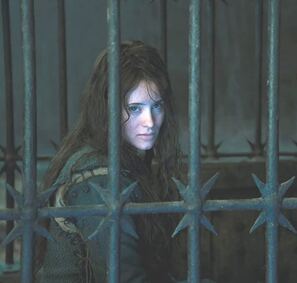 Claire Foy in her movie debut Claire Foy in her movie debut I'm fascinated by movies and stories with Book of Job themes in which the protagonist(s) struggles to believe in a loving God despite ample evidence to the contrary. These dark tales are timeless and cut to the heart of human craving for meaning and hope in the midst of despair, in this case, the dreaded Black Plague of 14th century Medieval Europe. The film fares better than most flicks in the horror genre because of good performances from the three lead actors; Nicolas Cage and Ron Perlman are two bad-ass knights (Beymen and Felson) and Claire Foy plays “The Girl” accused of being a witch and causing the Black Plague. In a key scene in the movie, our two knights are arrested and brought before the Cardinal (Christopher Lee) who has the plague and is on his death bed. The scene has a sense of realism – the four or five doctors attending the Cardinal are all wearing plague masks. The primitive masks had large beaks which were stuffed with dried flowers and herbs to block the bad smells of the open plague sores. The Cardinal decrees that for the knights to earn their freedom, they must escort a caged wagon to the Abbey of Severac. The girl in the cage has been accused of witchcraft and will be tried by the Monks at Severac using the sacred Book of Rituals. A priest, Debelzaq, is put in the charge of the expedition. The journey begins with a guide, 4 guards (including Bayman and Perlman) and the priest driving the wagon. The landscape is rugged mountains with narrow trails – I had the feeling the setting was high in the French Alps. As you would expect, the journey has plenty of action to keep the tension level and the viewer's interest high from start to finish. What I really liked about the film wasn't so much the swordplay, but that things are not as they seem: Initially we think that the priest is a misogynist who enjoys killing women, but this proves to be not the case at all. Also the girl is quite extraordinary – beside being physically very strong, she could skillfully transition herself into being a frightened innocent girl one moment to being very manipulative and menacing the next. Claire delivers an amazing performance in her first feature film debut. We are buffeted with conflicting information regarding the girl and the priest all the way to Severac. What is the real truth here? Eventually we find out, but not before the SHTF and swords are drawn in a fight to the finish. No spoilers. Spooktober 2021Here in Colorado the seasons are changing. Fall has arrived and the aspens are turning gold and orange. The cool weather is perfect for outdoor hikes and picnics, and when the sun goes down you might find yourself in the mood for a spooky movie. Here are some suggestions for your Halloween watch list. A Quiet Place 2018 drama horrorA Quiet Place is a post-apocalyptic thriller co-written, directed, and starring John Krasinski with his real-life wife, Emily Blunt. The couple (Eve and Lee Abbott) and their three kids (not-real life) are living in rural isolation and silence to avoid a pack of mysterious, seemingly indestructible, creatures that are blind and hunt by sound. The monsters are vicious killers. In the opening scene the family is “shopping” in a deserted drug store. In fact, the whole town is deserted. We watch them quietly go about the store, barefooted and close mouthed. They use sign language to communicate. A sense of doom hangs in the air and the suspense tightens – When will something happen? No spoilers, but when the monster strikes it is shockingly fast and brutal. I was riveted to the screen. Not only the horror aspect was good, but the dynamic between the family members is also very well done and gives the film a heart. I liked these simple characters and truly felt that this is a family that loves each other. The family home is not specified, but judging from the large corn fields and grain silos, I have to guess somewhere in the Midwest. The Abbotts do a heroic job of surviving a catastrophe – putting food on the table, home schooling the kids, and all the mundane chores of day-to-day life in the face of constant danger. We are in awe of their resourcefulness and bravery. Then it all goes terribly wrong – how will our characters survive? No spoilers, but I will add that John Krasinski has come a long way from quarreling with Rainn Wilson over paper clips and action figures (dolls). I suggest you put this movie on your Halloween list. It’s the best monster movie I have seen in years. A Star is Born 2018 drama, music, romanceBradley Cooper makes his director debut and co-wrote the screenplay as well. He is a well-known A-list actor. Lady Gaga, in her first starring role in a major film, was a bit of a wildcard, but she nailed it and was Oscar nominated for best actress for her performance. I had only seen Lady Gaga perform once -at a Superbowl half time show – which is not the same as this work. Can I refer to her as “LG” for short? Much to my surprise, my wife and I enjoyed the 2018 A Star Is Born. It was even better than the hype. It is so captivating and emotionally powerful with some great musical numbers. The film is perfectly paced and wastes no time introducing the two stars and getting a romance going. Bradley Cooper plays Jackson Maine, a 40-something rock star whose music seems like country or folk interspersed with dynamic rock guitar riffs. His music style reminded me of the Black Keys; one of my favorite groups. Maine is a brooding artist type with an alcohol and drug problem. He is also losing his hearing, which adds to his isolation and despair. One night, after a concert, Maine is looking for a place to continue drinking and ends up at a drag bar where he sees Ally (LG) perform “La vie en rose.” She really belts it out of the park and brings the audience to their feet. “La vie en rose” is about the bliss and blindness of love, which foreshadows what is to come. They make eye contact and Jackson is smitten. He persuades Ally to hop in his limo, and off they go for an all-nighter of talking and singing. Jackson says to Ally, “Can I tell you a secret? You might be a songwriter.” He is in love, but she is a bit wary and not a typical groupie. I was much impressed with LG’s performance as an actress. There is not a flat or a false note in her dramatic scenes. Just freshness and authenticity. She was outstanding in the musical scenes, but that is not too surprising. I suppose that the character of Ally is not too far from LG herself. Both Cooper and Gaga brilliantly portray artists because, well, they are artists. The reason Star Is Born gets remade over and over again is very obvious: it is the archetypal vehicle for a Diva. LG with her amazing singing voice, great acting and dancing skills make her the most powerful triple threat in the biz. No one today really compares to her. This is not to dismiss previous actress in the same role. Judy Garland, Barbara Streisand or Janet Gaynor, while in their prime, would most likely receive the same praise. I won’t say much about the plot of this 2018 version – there already exists an immense amount of film commentary about all four A Star is Born versions (1937, 1954, 1976, 2018). I approached the movie naïvely and enjoyed it all the more. Through some miracle, I didn’t even know the ending. I don’t want to deny you the same pleasure. I highly recommend A Star Is Born – and turn up the volume for the music. |
AuthorWritten by Ben Clark. Copyright 2016-2023. All rights reserved. Archives
August 2023
Categories |
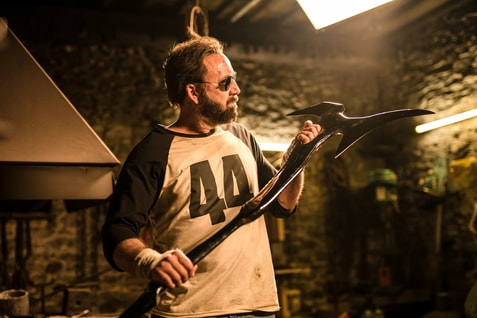
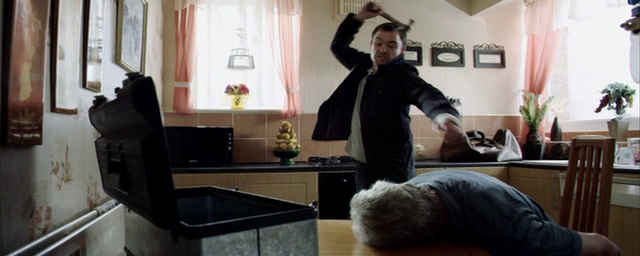

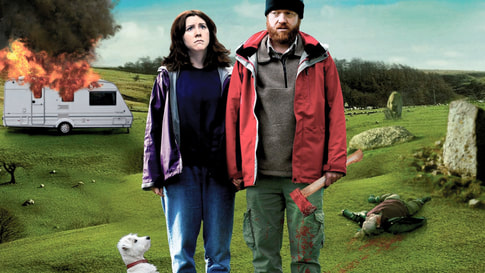
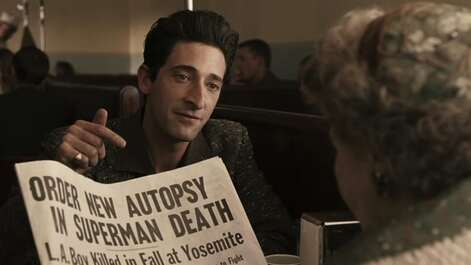

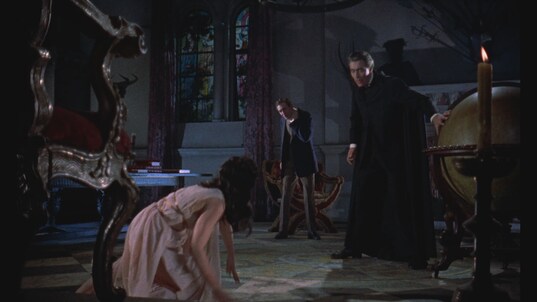
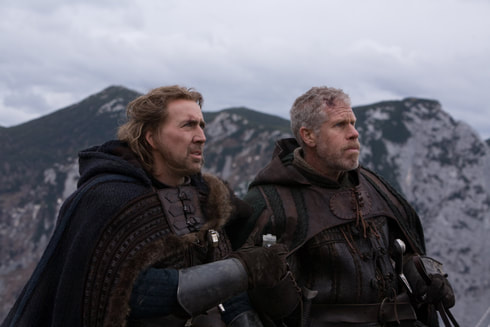


 RSS Feed
RSS Feed
